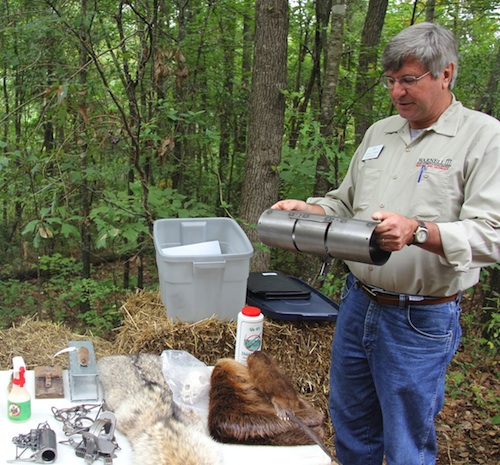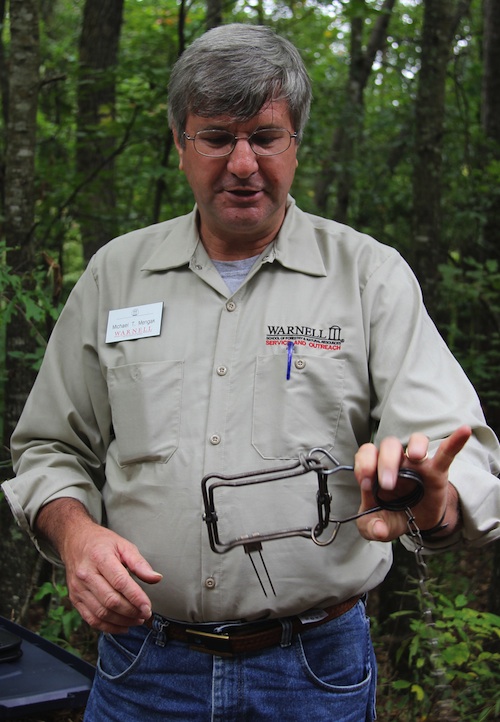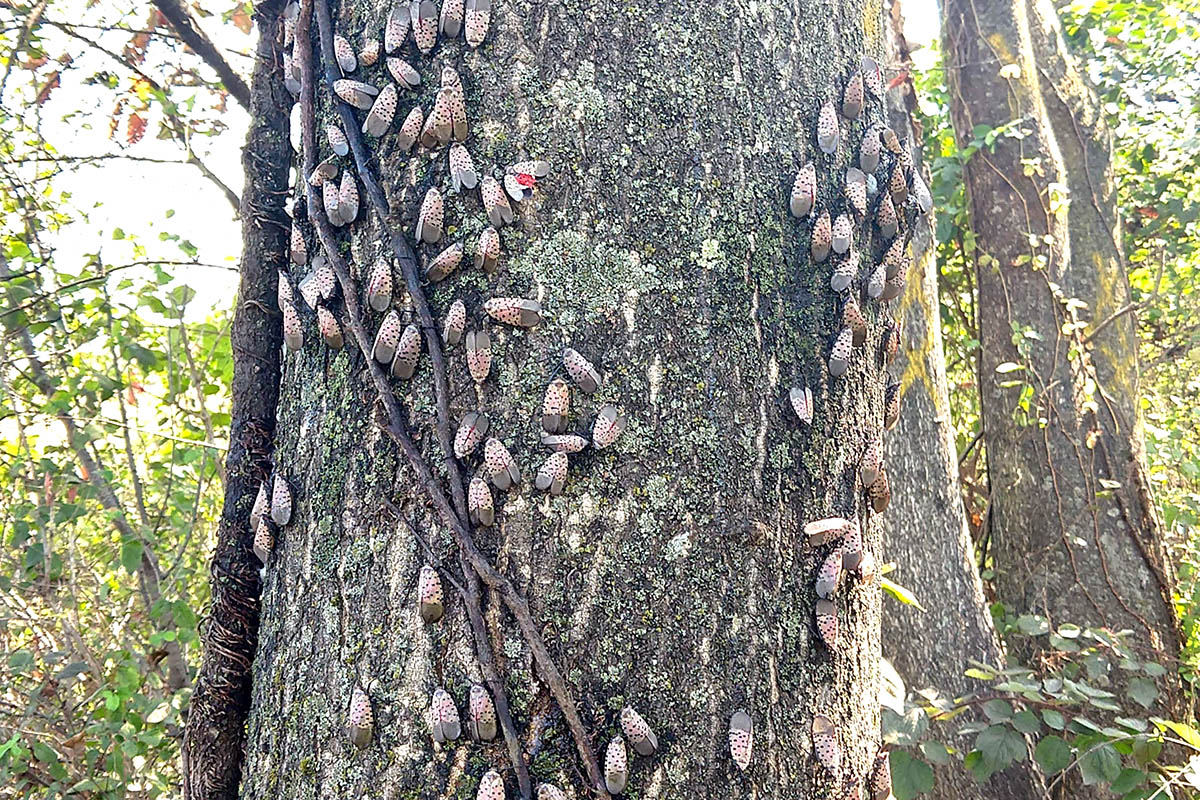Chewing pests have many Georgia homeowners wondering “Who dunnit?” when their favorite tree or shrub is scarred by teeth marks.
In west Cobb County, Bruce Roberts is losing landscape plants to a critter that loves to chew through the main stem of plants just above the roots.
“Several months ago, I noticed one of our nandinas lying on the ground. Something had chewed completely through it just below ground level, where the trunk meets the roots,” he said. “Since then, the same thing has happened with other nandinas, mahonias and hollies.”
Roberts describes the gnaw marks as small. If the shrubs and marks were larger and he lived on a pond, Roberts would think beavers caused the damage.
University of Georgia Cooperative Extension wildlife expert Michael Mengak says correctly knowing who is causing the damage is key to preventing and controlling wildlife in landscapes.
“Deer don’t chew below ground. If your damage is below ground, you have voles or rabbits,” he said.
All animals leave signs or evidence that they’ve been in the area.
Droppings
Fresh droppings are black and shiny while old droppings are dry and brown or gray.
“Black and white droppings can be from a bird, snake or lizard,” Mengak said. “The size of the droppings will also tell you a lot.”
Rats, mice, chipmunks and toads leave droppings the size of a grain of rice. Rabbit droppings are pea size and deer droppings are large and oval.
Digging
A dirt mound could be a sign of a groundhog, turtle, armadillo or coyote.
If there is no dirt mound, the digger is likely a chipmunk, skunk, mole or vole. Tunnels are also signs of moles and voles. Armadillos dig inverted, cone-shaped holes 3 to 4 inches deep and 1 to 2 inches in diameter, Mengak said.
Gnawing
If leaves are clipped or bitten in a clean, sharp manner, the pest is likely a rabbit, squirrel or woodrat. If branches are cut, squirrels or rabbits are probably the cause. Deer lack upper incisors, so they leave a ragged cut on leaves.
Time of day
Raccoons, skunks, opossums and woodrats move at night, while squirrels, chipmunks and woodchucks are active during the day.
UGA’s Extension experts offer some tips on controlling wildlife in your landscape.
To discourage deer from munching on your marigolds, Mengak recommends using Liquid Fence, Deer Off or Deer Away. All of these products are available as a spray from local home gardening centers. “These products should never be applied to food crops, and read labels carefully,” he said.
To treat for voles and rabbits, use milorganite, also available at most home improvement and gardening centers.
Like their rodent cousins, voles and chipmunks should be trapped using mousetraps baited with peanut butter. “Not much else will be effective,” he said. “Chipmunks are primarily seedeaters. They might chew a woody shrub, but that would be unusual.”
If trapping doesn’t appeal to you, modify your landscape to discourage voles and chipmunks. Clear existing mulch and apply gravel instead of bark or pine straw, Mengak said. “This method can work, but it’s counter-intuitive to gardening principles,” he said.
Use the HERL method
When fighting critters in your landscape, follow the HERL method: habitat modification, exclusion, removal or repellents, and lethal control.
“Unfortunately, it’s hard to create a habitat that attracts the wildlife you want and discourages the nuisance species,” Mengak said.
He recommends following these steps:
Modify your landscape so it’s not the perfect habitat for the pest animal.
Remove anything that could be used as cover.
Mow tall grass and remove piles of brush, logs, rocks and other debris.
Build a fence to exclude wildlife. A deer fence should be 8 feet tall or higher, while chicken wire fences can be just 2 feet high.
Use a net or a trap to remove the pest or a repellent to discourage the animal from coming into the area. Effective repellents work through taste, fear or odor.
Lethal traps can be used to control a small number of pests, but may require permits from a state or federal wildlife agency. Use live traps with extreme caution. Raccoons, skunks and other animals that may carry rabies should not be caught in live traps.
Use poison baits to control rats, mice and other small rodents. Keep out of reach of children and pets. Baits are best used in out buildings or under careful observation.
For further assistance, call your local UGA Extension office at 1-800-ASK-UGA1.










